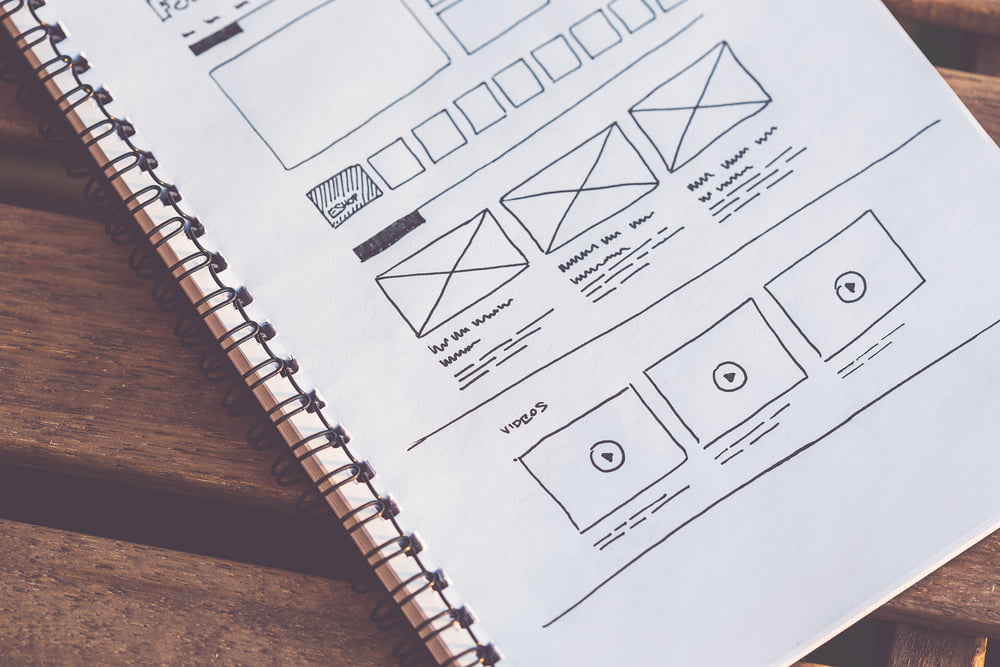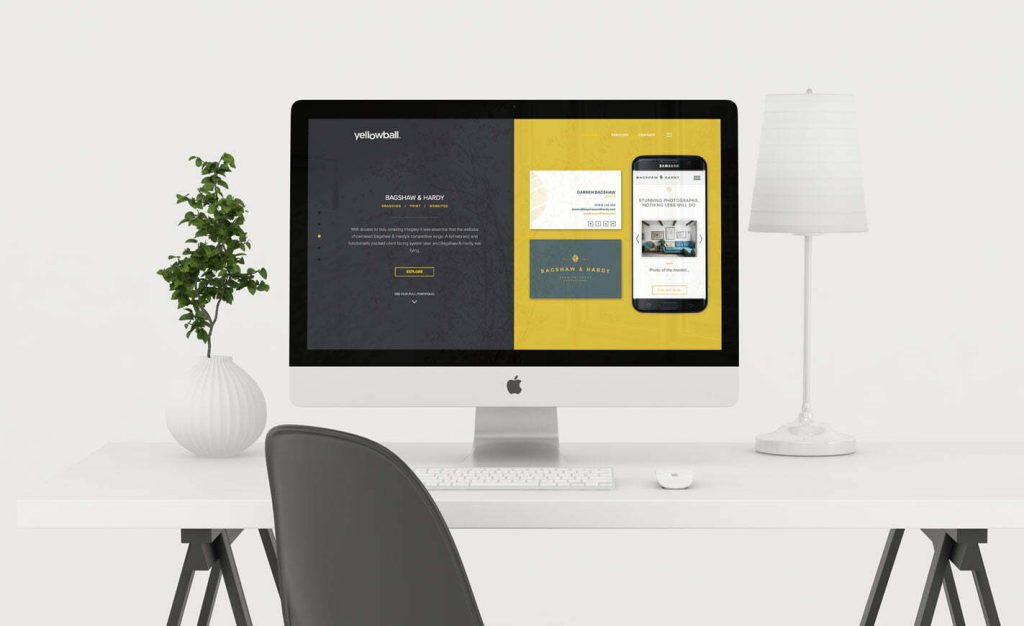On 3rd of September 2019, our Head of Design and Managing Director held a talk at AutumnFair 2019 in regards to “Building an E-Commerce Website that Works for You and Your Customers”. Having had such a positive response from those at the talk, we thought we’d transcribe the talk to share with the world. Without further adieu, here’s a number of useful tips for e-commerce sites, from improving an existing site, all the way through to designing and building a website bespoke, from scratch.
The process of developing an e-commerce website should always start with the customer. No exceptions. Understanding your buyers – their buying habits, what motivates their purchasing decisions, their personalities – is essential to ensuring the success of your e-commerce site. Step into the skin of your target market and consider how they would expect a site to work, what information will they be looking for from each page? What are their browsing habits? The point is, whether you’re looking to create a whole new site, or revitalise a current one, you need to make sure you’ve done your research before you change a single thing. So, where do you start?
Ecommerce Website Development Checklist:
- Market Analysis
- Site Structure
- Mobile Responsivity
- High Quality Site Functions
- The Paradox of Choice
- Legibility
- Load Speed
- Predictability
- The Scarcity Principle and Social Proof
- Gain User Feedback
1. Market Analysis
Do a bit of market research. Think about your target market and consider which of your competitor sites they might use, and which other sites they might use in their day to day life. For example, would they use a platform like ASOS where there are a lot of different options from a wide range of different suppliers, or would they use a site more similar to Ted Baker or Oasis that provide products that are produced only by their own brand? What are the pros and cons of each site? Does one site have a particularly good filtering method? Could another site be improved by a more seamless UI/UX? How do the sites work across different devices?
2. Site Structure
Users are unlikely to part ways with their hard-earned cash on a website that they don’t trust. Websites that are cluttered with adverts, poorly communicated information and a confusing structure incite less confidence into its users than a well thought out, structured site. The best way to ensure that your site is well structured is to study the visual hierarchy of websites.
Consider each element when re-designing or building your website, however this can involve a considerable investment of your time and resource. You may find that when it comes to optimising your site’s structure, you may get a more efficient ROI from hiring a specialist agency like Yellowball to undertake the task for you.
Menu structures, search functions and filtering options should be a primary concern when assessing your ecommerce site’s design and structure. The user journey to each product page, no matter what that may be, should be as seamless and smooth as possible. Your users should be able to find the information that they’re looking for in the minimum amount of time.
3. Mobile / responsiviness
We’re not going to regurgitate a string of stats to convince you of the importance of a responsive site. Unless you’ve been living under a rock since 2008, you’ll be aware of the significance of a mobile-friendly site to e-commerce. What we will emphasise, is that whilst a mobile app can be very valuable, you do not want to view it as a complete replacement for a mobile friendly website. Users will still visit your site via a mobile browser and as such, not only will it affect UX but also your SEO.
Google itself is notorious for their secrecy when it comes to outlining improvements that developers need to make to their sites to improve their website rankings, but even they have openly announced that a user’s mobile experience will affect a site’s rankings. Broadly speaking, higher rankings lead to higher site traffic and a higher conversion rate. It can be therefore theorised that poorer rankings due to a sub-optimal website mobile experience could ultimately be losing you money.
Yes, a mobile app can often streamline a user’s mobile experience and, through the use of push notifications, encourage returning custom – but it’s important to not neglect your mobile site. It’s not an either/or philosophy. Your user’s experience on mobile, whether via a browser, an app, or both, should be a priority.
4. High Quality Site Functions
An often forgotten navigation consideration is the way in which your search function is configured. For example, one of the most common search bar issues is the way in which the search returns information to the user. If a user was looking for a yellow sofa on your site, they might reasonably search for “Yellow sofa”, however you don’t have a sofa with the exact product name of “Yellow Sofa”, though many of the sofas that you stock might be available in yellow upholstery.
The site will then return no results for a yellow sofa, therefore leading the user to understandably assume that you don’t have the product that they’re looking for and abandon the site. It is important to consider exactly how your users will interact with your search function, and tailor it to your users. Whilst also ensuring that when products are added to the site that they are set up correctly so that all of the tags and categories ensure the products are being displayed for certain search terms.
The same goes for filtering. Consider which factors your users will care about the most when trying to buy the product and use this on the page to help filter the products effectively and efficiently.
5. The Paradox of Choice
This consideration is pretty much exactly what it says on the tin. Having too many items or categories and then subcategories available on the menu overwhelms users and can cause them to abandon the buying process entirely. If you have two options that are very similar to each other that your users might reasonably want to compare to each other (L-Shaped sofas and sofa beds), keep them together in one category. If your users have to jump between too many menus, tabs and categories in order to make a decision or complete the purchasing process, you can safely assume that your users will leave your site in favour of another, more simplistic site.
6. Legibility
An easy mistake to make that many companies overlook is whether or not the user can actually understand the information on the page. Is the font large enough? Does the colour contrast well against the background colour? Is the information accessible to users of varying abilities? Consider colour blind users. If a large amount of your site is video-based, consider using subtitles for hearing impaired users.
This is another instance in which a poorly considered visual hierarchy can confuse users. If the page is overloaded with competing pieces of information that doesn’t have a natural flow, the user won’t be guided comfortably through the page in an ordered and natural way. To combat this issue, ensure that the information on the page has a clear priority with enough white space and padding around the different elements to avoid overcrowding on the page. Feel free to use Yellowball’s visual hierarchy explainer to help avoid some of the roadblocks that your users may come across.
7. Load Speed
Load speed has a vast impact on your site’s SEO and your user’s experience when using your site. A study from Kiss Metrics discovered that “79% of shoppers who are dissatisfied with website performance are less likely to buy from the same site again.” It’s not at all surprising considering that humans are an innately impatient breed which is only exacerbated by today’s instant information culture. If your load speed is suffering as a result of gimmicky design features or poor optimisation, you can expect your organic rankings to take a hit and therefore your conversion rate and therefore revenue.
So how do you ensure that your load speed is optimal? There are two routes you can go down with this. Either hire an experienced developer or agency like Yellowball to perform a thorough audit on your website and present you with a full report of the different areas of improvement for your site. By choosing a professional agency like Yellowball, you can rest assured that no stone will be left unturned in order to improve your site’s load speed and get it into tip-top shape.
Alternatively, there is a whole host of articles and tech blogs that are available for you to educate yourself and learn a new skill. By doing this as well, you remain in complete control of your website and the optimisation of it. The downside however, is that you could be missing out on key techniques and solutions that a specialist agency would pick up on immediately. A common quick win with regards to load speed is to ensure you are optimising your images for web, whatever you do don’t upload the high res 15mb photos supplied by your product photographer. Here’s some more information on image optimisation and its implementation.
8. Predictability
We’re all for innovation, standing out from the crowd and individuality, but it’s important not to confuse an alienate your users with convoluted and confusing user journeys. Design your site around a standard userflow. Your design can be as adventurous or simplistic as you like, so long as this isn’t at the expense of a clear and straight forward user journey. If your site flow starts to deviate from the standard online purchasing process, your users could become very frustrated and lose trust in the site altogether. They’ll no longer feel in control of the process, and therefore are less likely to trust your site with their money.
Think about any online purchases you made in the last two months. Study the websites – what made you feel comfortable handing over your card details and sending them your money? What do you think could have been improved? Reinventing the wheel really isn’t the answer when it comes to the transactional process on an e-commerce site.
9. The Scarcity Principle & Social Proof
The scarcity principle feeds on the human nature to assign a higher value to an item that is rarer or less readily-available than that which is perceived to be in abundance. Utilising The Scarcity Principle in your on-page marketing for e-commerce sites encourages users to engage in a far shorter cost-benefit analysis as the perceived time to make up their mind on whether or not to purchase the product is greatly reduced. Using product stock counters, “low stock” warnings and even low stock notification emails will all incite action in users at a quicker rate.
The methods used in the Scarcity Principle also act as confirmation and social proof. Consumers draw parallels between the availability of a product and the quality of that product. After all, people don’t buy a product to the point of sell-out if it’s no good, do they?
However, using the Scarcity Principle on your website should be implemented with caution and consideration otherwise, you could end up in hot water. For example, Booking.com has recently been penalised by the CMA for “pressure-selling” and hidden charges. Booking.com was amongst a list of six other hotel booking agencies that were found to be using high-pressure selling tactics in order to make rooms appear more popular than they were. These basic outlines from Which? can help you to navigate whether or not you might find yourself on the business end of a penalty from the CMA. What it essentially comes down to is not missell or mislead your customers. If a product isn’t really flying off the shelves, don’t say it is. If you’re advertising that you only have 15 units of a product left when in actuality you have 1,600 units left – that’s pressure-selling.
Ultimately, the quality of an e-commerce site is dependent on structural considerations, a seamless journey and appealing to social human psychology. It’s no small task to take on, and if your efforts are fruitless due to improper implementation, you could end up doubling the time it takes to realise a return on your investment. We might be biased, but we’d recommend hiring a specialist agency like Yellowball from the get-go to make sure that the implementation of all aspects of your site are considered and thorough.
10. Gain User Feedback
Whilst you and your internal team may know your product inside and out, that’s not necessarily such a good thing when it comes to testing and improving your site. Any team member that has been with your business for more than a month will already have navigated the site too many times to be considered “impartial” or “a fresh pair of eyes” anymore. They already know where to find your product pages, how to navigate your contact forms and know where to find anything your customers might need from your site.
Instead, use individuals that fit your buyer personas. That might be brand new customers, returning customers and any customer type in between. There’s an abundance of companies out there that will be happy to provide user feedback. From giants like Kantar, to online platforms like usertesting.com. You’ll gain impartial user feedback and therefore a good insight into the usability of your site. Whatever you do, don’t underestimate how important it is to gain an understanding of how users will navigate your site when visiting for the first time, or the thirtieth time.
Experience a seamless transition to your new eCommerce website with our expertise in web development and SEO site migration, or read our guide on SEO site migration guide.
Read: Must-Have Features and Best Practices for E-commerce Websites









